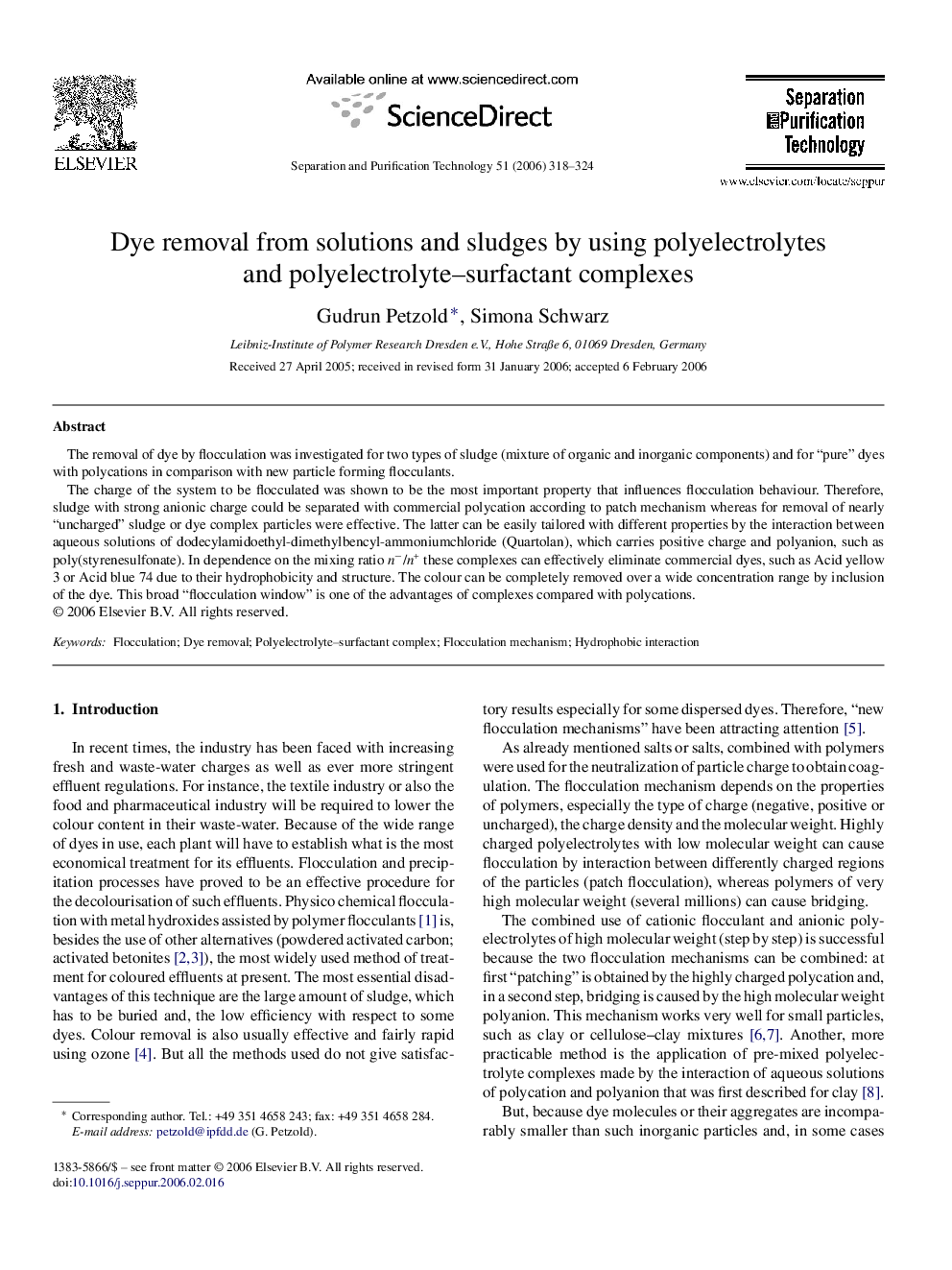| Article ID | Journal | Published Year | Pages | File Type |
|---|---|---|---|---|
| 644173 | Separation and Purification Technology | 2006 | 7 Pages |
The removal of dye by flocculation was investigated for two types of sludge (mixture of organic and inorganic components) and for “pure” dyes with polycations in comparison with new particle forming flocculants.The charge of the system to be flocculated was shown to be the most important property that influences flocculation behaviour. Therefore, sludge with strong anionic charge could be separated with commercial polycation according to patch mechanism whereas for removal of nearly “uncharged” sludge or dye complex particles were effective. The latter can be easily tailored with different properties by the interaction between aqueous solutions of dodecylamidoethyl-dimethylbencyl-ammoniumchloride (Quartolan), which carries positive charge and polyanion, such as poly(styrenesulfonate). In dependence on the mixing ratio n−/n+ these complexes can effectively eliminate commercial dyes, such as Acid yellow 3 or Acid blue 74 due to their hydrophobicity and structure. The colour can be completely removed over a wide concentration range by inclusion of the dye. This broad “flocculation window” is one of the advantages of complexes compared with polycations.
